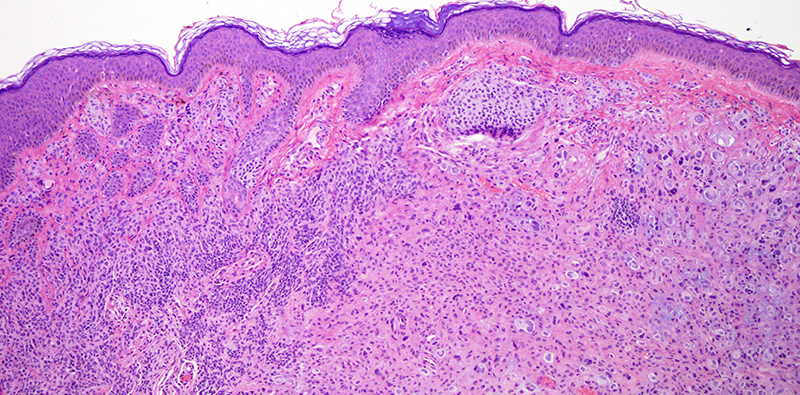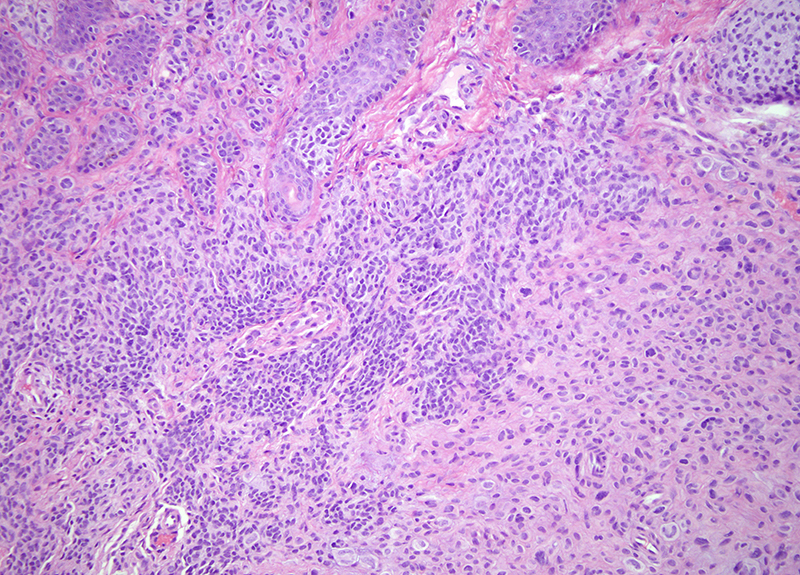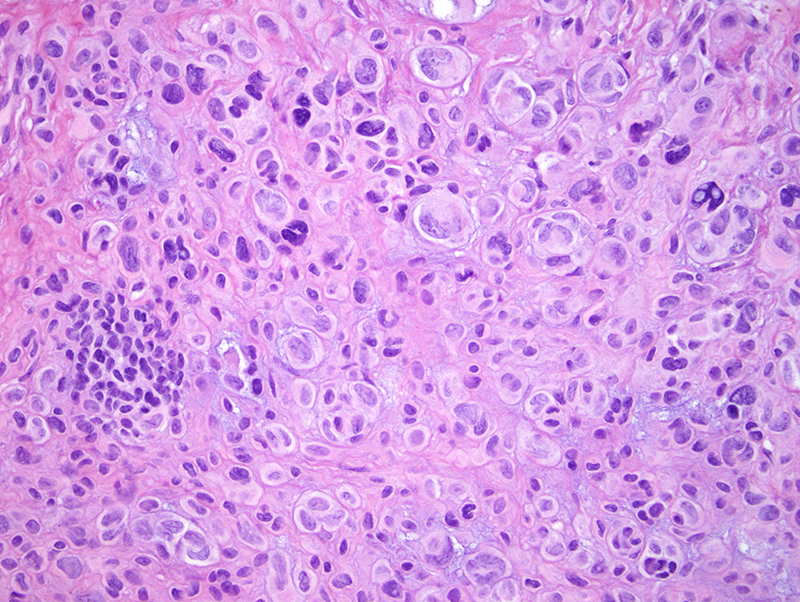The patient has a very unusual atypical epithelioid tumor arising in a background of a compound nevus. This nodule is composed of pleomorphic atypical epithelioid melanocytes. This proliferation defies categorization as a nevus. The differential diagnosis encompasses a nevoid melanoma with spitzoid features arising in a precursor compound nevus versus a melanocytic tumor of undetermined malignant potential with features of the atypical Spitz's tumor versus an unusual variant of the epithelioid spitzoid tumor namely one showing a loss of BAP1. Given loss of BAP1 on IHC, the overall assessment is that of a combined lesion composed of an atypical BAP1-deficient epithelioid Spitz tumor and conventional melanocytic nevus.
Germline mutations in BAP1 cause a familial tumor syndrome characterized by melanocytic tumors with distinct clinical and histologic features. These neoplasms tend to harbor mutations in BRAF and show loss of BAP1 expression by immunohistochemistry. Histologically they resemble the so-called "atypical Spitz tumors". In fact, a subset of atypical Spitz tumors does harbor similar losses of BAP1 expression and concomitant BRAF mutations. These tumors are primarily located in the dermis and are composed of epithelioid melanocytes with abundant amphophilic cytoplasm and well-defined cytoplasmic borders. Nuclei are pleomorphic and contain conspicuous nucleoli. Wiesner T et al. A distinct subset of atypical Spitz tumors is characterized by BRAF mutation and loss of BAP1 expression. Am J Surg Pathol. 2012 Jun;36(6):818-30







